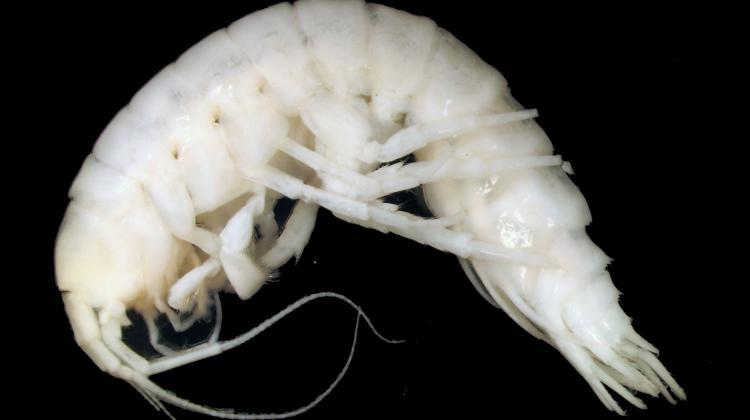Bathyceradocus hawkingi - a new species of crustacean named after Stephen Hawking
 Source: Dr. Anna Jażdżewska
Source: Dr. Anna Jażdżewska
Bathyceradocus hawkingi is a newly identified amphipod species described by researchers from the University of Lodz. This crustacean lives in the ocean depths and eats... wood. It was named in honour of the astrophysicist Prof. Stephen Hawking, who died last year.
"By naming this species, we wanted to honour an eminent researcher and a great promoter of science. The name also refers to the fact that our knowledge about the ocean depths is as small as that concerning deep space" - says Dr. Anna Jażdżewska from the Department of Invertebrate Zoology and Hydrobiology, University of Lodz, who described the new species together with her student Aleksandra Ziemkiewicz.
Amphipoda is an order of crustaceans commonly found in sea and freshwater, and even on land. Nearly 10,000 species of these animals are known. They live both in coastal waters and in the deepest depths, including oceanic trenches.
The newly described amphipod species was caught at a depth of over 5,000 m, on the abyssal plain near the Kuril Trench (north-west Pacific). It is the fourth species of the genus Bathyceradocus described so far.
It is a relatively large organism measuring up to 2 cm in length. Crustaceans belonging to this group are associated with wood falling to the bottom of the oceans. "They use fragments of wood not only as shelter, but also as a source of food, which is quite unusual in their environment. It is not yet known whether the digestion of wood is associated with the production of specific enzymes by the amphipods, or with the presence of symbiotic bacteria in the digestive tract, capable of decomposing cellulose" - the researcher notes.
According to Dr. Jażdżewska, the basis for the description of the new amphipod was the analysis of external appearance (morphology) of a dozen individuals. It was supplemented with a molecular analysis of the cytochrome oxidase (COI) gene fragment that allowed to obtain the genetic bar code for the described species.
"Thanks to this, researchers will be able to mark their materials based on morphological description, but also with the use of genetic methods" - emphasises Dr. Anna Jażdżewska from the University of Lodz.
PAP - Science in Poland
szu/ ekr/ kap/
tr. RL
Przed dodaniem komentarza prosimy o zapoznanie z Regulaminem forum serwisu Nauka w Polsce.















